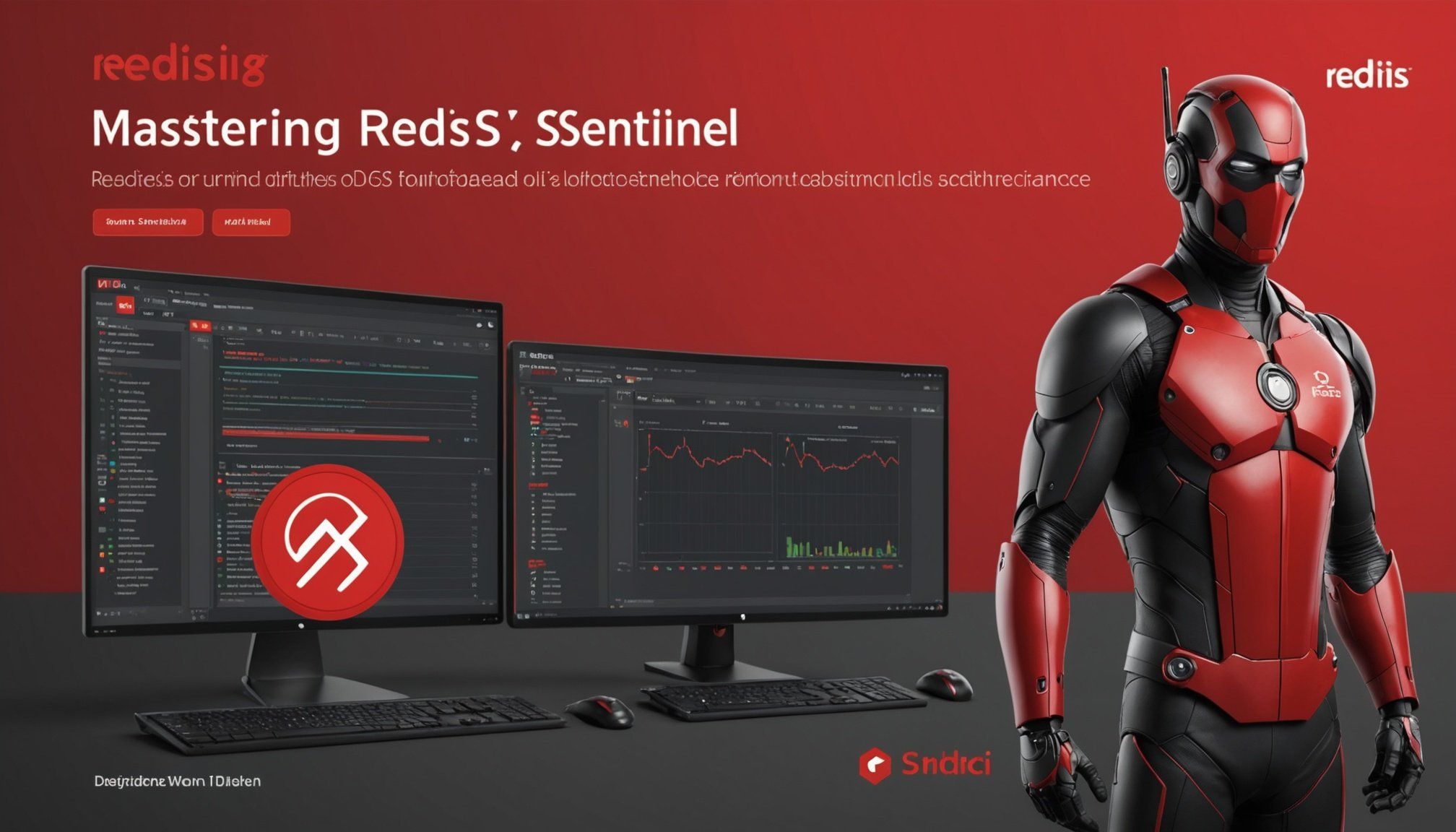Understanding Redis Sentinel
Redis Sentinel provides robust high availability for Redis databases, making it an essential tool for any production environment. It monitors Redis instances and automatically triggers a failover in case of server outages.
Redis Sentinel architecture comprises several key components:
Also read : Mastering Kubernetes Helm Charts: Essential Strategies for Optimized Application Configuration Management
- Sentinel Nodes: These are distributed across the network to ensure redundancy and reliability. They monitor master and slave instances, electing a new master in case of a failure.
- Configuration: The configuration includes parameters that define how Sentinel operates. You must specify monitored master nodes, quorum numbers for decision making, and authentication details.
- Failover Process: Redis Sentinel handles the automatic promotion of a slave to master in an outage scenario, ensuring data is always available.
The key benefits of using Redis Sentinel include seamless high availability, minimal downtime through automated failover, and distributed monitoring that alerts administrators to any server issues. It ensures that workload distribution remains stable by maintaining the proper master-slave configuration even after transitions, making it invaluable for environments that cannot afford service interruptions.
Setting Up Redis Sentinel
Before diving into the Sentinel setup, you must prepare your environment. Redis installation is the first step, requiring a compatible system and dependencies, which vary slightly between Unix-like environments. Begin by obtaining the latest Redis version and compile it using make command. Ensure Redis runs smoothly before proceeding to the next stage.
Also to discover : Unlocking Success in Machine Learning Deployment: Your Comprehensive Guide to AWS SageMaker Mastery
Next, deploy Redis Sentinel by adjusting the configuration files. These files, typically named sentinel.conf, must include crucial parameters such as the monitored master name, IP address, and port. You must also define quorum numbers and set up authentication to ensure secure communication between nodes. Each Sentinel process requires a unique port for effective operation and monitoring.
When setting up the environment, consider machine resources and network segmentation. Redis Sentinel thrives in environments with dedicated resources, preventing resource contention that may impact performance. Also, establishing clear network boundaries ensures that the Sentinel setup communicates reliably across local and cloud environments. Finally, ensure proper firewall rules are in place to allow seamless interaction between Sentinels and Redis instances.
By attending to these installation and configuration details, you provide a robust foundation for deploying Redis Sentinel in production.
Configuring Redis Sentinel for High Availability
Ensuring high availability in Redis requires meticulous Sentinel configuration, involving precise master-slave setup and failover management.
Defining Master and Slave Roles
Begin by designating master and slave instances. The master starts as the primary data source, while slaves replicate data for redundancy. During a failover, a configured slave can be automatically promoted to master, maintaining availability. It’s essential to secure data replication to prevent loss or corruption in role transitions. This involves setting up authentication and enabling secure connections, ensuring data integrity during unexpected disruptions.
Sentinel Monitoring and Notifications
Configuring Sentinel to monitor instances is crucial. This is achieved through monitoring settings in the configuration files, where you define notification thresholds. Implement alert mechanisms like email or SMS to notify administrators of potential failures instantly. This proactive approach allows for rapid issue resolution and aids in decision-making regarding auto-scaling and resource allocation.
Handling Failover Scenarios
Redis Sentinel’s automatic failover process seamlessly handles outages. By conducting regular failover tests, you ensure the infrastructure’s resilience. These tests let you fine-tune recovery strategies and address common issues such as misconfigured network settings or resource bottlenecks. Successfully navigating failovers keeps your Redis deployment robust and responsive.
Performance Optimization Techniques
Optimizing Redis performance is crucial for maintaining an efficient, high-performing data system. High availability doesn’t solely depend on setup and configuration; it also involves consistent performance tuning.
Optimizing Memory Usage
Memory allocation plays a pivotal role. Overloading memory can lead to sluggishness. Use the maxmemory and maxmemory-policy configurations to control how Redis manages memory limits. These parameters prevent performance bottlenecks by avoiding overcommitment.
Fine-Tuning Sentinel
Sentinel itself must be fine-tuned. Adjusting down-after-milliseconds effectively helps Redis Sentinel to detect failures without jumping the gun. Too short, and Sentinel may incorrectly flag healthy nodes; too long, and responsiveness may suffer. Regularly reviewing your tuning ensures optimal decision-making during failovers.
Analyzing Performance Metrics
Regularly monitor Redis instances using tools like redis-cli or third-party analytics to track performance metrics such as memory usage, CPU load, and latency. Identifying trends through these metrics aids in preemptively addressing issues before they affect the system. Utilize performance indicators for strategic resource planning and capacity forecasting to sustain Redis use cases effectively. These practices enhance the efficiency and reliability of your Redis deployments.
Real-World Use Cases
Redis Sentinel offers diverse Redis use cases across various industry applications, providing resilience and high availability. In e-commerce, a robust microservice architecture demands responsive databases. Redis Sentinel seamlessly integrates, ensuring real-time inventory updates despite potential node failures. Consider an online store where product availability is paramount; the Sentinel’s failover configuration guarantees uninterrupted service by swiftly promoting a slave to master during server disruptions.
In financial services, handling high volumes of transactional data securely and efficiently is crucial. Redis Sentinel supports cloud environments, aiding in secure data replication across geographies, fulfilling compliance requirements. A bank leveraging Redis ensures low-latency transactions while Sentinel proactively manages server health, scaling operations to accommodate peak loads seamlessly.
Tech companies often deploy Redis in microservices for caching and session storage to boost application performance. Through Redis Sentinel, they maintain continuous service uptime, essential for user satisfaction.
Lessons learned involve recognising Sentinel’s need for careful environment configuration. Monitoring parameters and ensuring adequate resource allocation to avoid common issues like node miscommunication are vital. This strategic deployment aids organisations in tapping into Sentinel’s full potential, enhancing both reliability and response times.
Common Pitfalls and Troubleshooting Strategies
Successfully deploying Redis Sentinel involves navigating occasional hurdles. By understanding common issues, users can address them efficiently, ensuring seamless operation.
Common Configuration Mistakes
Redis Sentinel configuration can be tricky. Errors often stem from version compatibility issues, such as mismatches between Sentinel and Redis versions. To prevent this, always verify version alignment before installation. Misconfigured networks often lead to node miscommunication. Ensuring correct IP settings and firewalls is crucial for proper operation.
Monitoring and Logs
Effective monitoring and log utilisation are key for identifying problems. Properly configured logs offer insights into system behaviour, revealing potential missteps. Implementing robust monitoring using tools like redis-cli helps track performance metrics and detect anomalies. Regular analysis of logs aids in proactive troubleshooting, reducing downtime.
Community and Support Resources
Leverage both official and community-driven resources for guidance. The official Redis documentation provides detailed instructions on setup and maintenance. Engaging in forums and knowledge bases helps share experiences and solutions. Continuous learning through community channels fosters improvement, equipping users to tackle new challenges adeptly.
Understanding these facets ensures a resilient Redis deployment, supporting high availability and effective error resolution.











